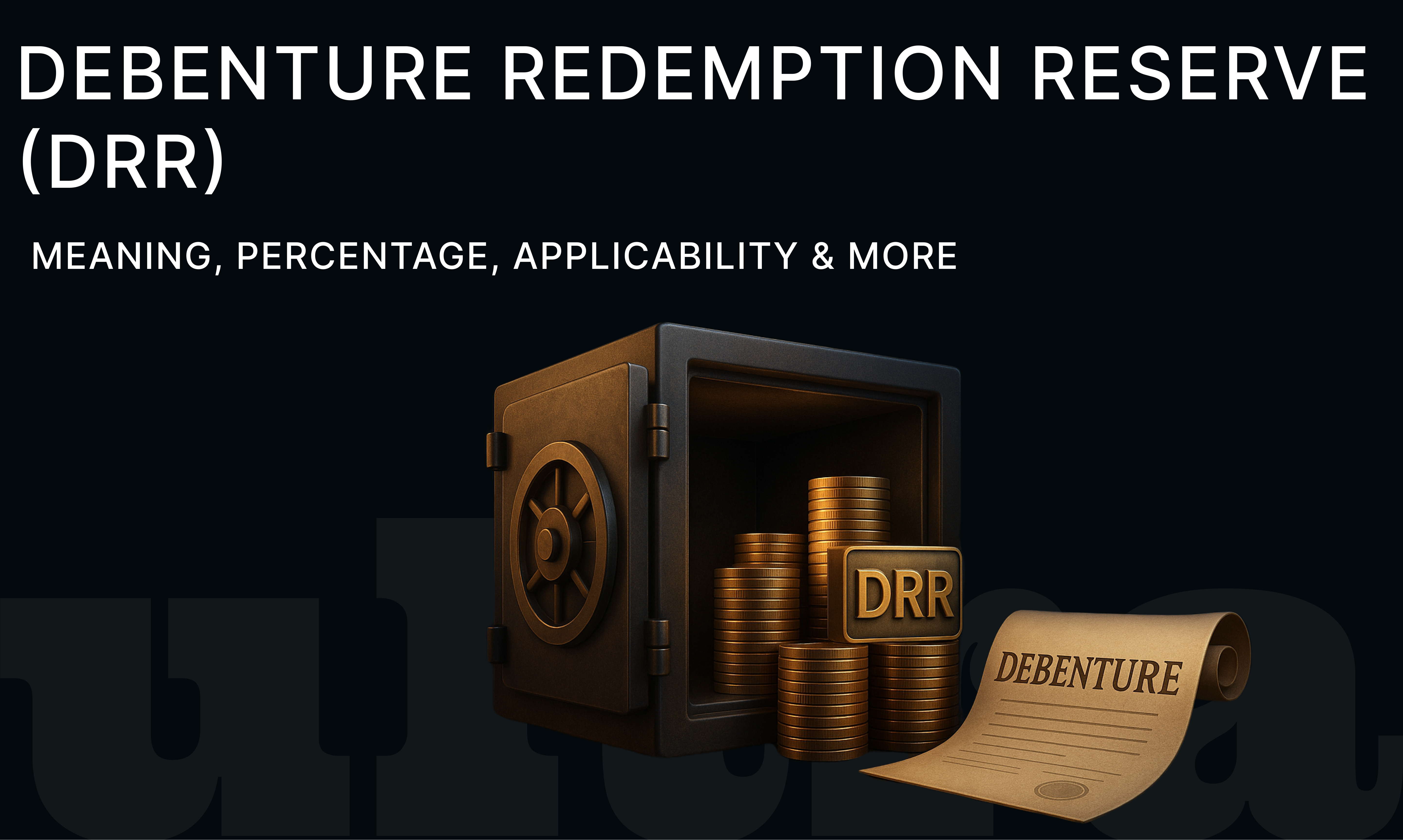Debenture Redemption Reserve (DRR): Meaning, Percentage, Applicability & More
09 July 2025 · Sachin Gadekar
Debenture Redemption Reserve: Meaning, Applicability, Entries, and More.

What is Debenture Redemption Reserve (DRR)?
For companies raising funds through debentures, ensuring timely redemption is critical. That’s where the Debenture Redemption Reserve (DRR) comes in — a safeguard to protect investors and ensure companies meet their debt obligations responsibly.
At Ultra, we empower investors with knowledge about instruments like debentures and concepts like DRR, so you can invest with confidence.
A Debenture Redemption Reserve is a statutory reserve a company must create out of its profits before redeeming its debentures. This reserve acts as a cushion, ensuring the company sets aside funds to repay debenture holders when the debentures mature.
In simple terms, the DRR helps prevent a situation where the company might default on repayment due to a lack of funds.
Why is DRR Needed?
When companies issue debentures — a type of long-term debt — investors expect guaranteed redemption at maturity. By mandating a DRR, regulators ensure companies gradually set aside profits for redemption instead of risking default.
In India, provisions under the Companies Act, 2013 and rules prescribed by SEBI govern the creation, maintenance, and investment of DRR.
Debenture Redemption Reserve Percentage
Earlier, companies were required to create a DRR equivalent to 25% of the outstanding debentures. However, the rules have changed over time.
Current Applicability (as per MCA rules):
Listed companies issuing debentures through public issue or private placement: No DRR required.
Unlisted companies must create a DRR of at least 10% of outstanding debentures.
NBFCs and HFCs have separate norms.
Always refer to the latest MCA notifications for updated percentages.
Debenture Redemption Reserve in Balance Sheet
Debenture Redemption Reserve in Balance Sheet
The DRR appears under the Reserves and Surplus section in the company’s balance sheet. It is shown separately as ‘Debenture Redemption Reserve Account’, distinct from General Reserves or Profit & Loss.
For example:
Balance Sheet Extract:
Reserves & Surplus:
General Reserve: ₹20 Cr
Debenture Redemption Reserve: ₹5 Cr
Retained Earnings: ₹30 Cr
Debenture Redemption Reserve Entry
Apart from DRR, companies must invest at least 15% of the debentures maturing in a financial year in specified securities by April 30 every year. This is called the Debenture Redemption Investment (DRI).
This ensures liquidity is available when debentures are due for redemption.
Example of Debenture Redemption Reserve
Example:
ABC Ltd. issues debentures worth ₹50 crore. As an unlisted company, it must create a DRR of at least 10% of the debenture amount, i.e., ₹5 crore, before redeeming them.
Additionally, it must invest at least 15% (₹7.5 crore) in specified instruments to meet the DRI requirement.
Debenture Redemption Reserve Applicability
Here’s when DRR is applicable:
Listed Companies: Not required to maintain DRR for public issues.
Unlisted Companies: Required to create a DRR.
All Companies: Must invest 15% of maturing debentures in safe investments, regardless of DRR applicability.
Key Points to Remember about DRR
DRR protects debenture holders by ensuring repayment.
It improves the company’s creditworthiness.
It appears in the Reserves & Surplus section.
DRR must be created out of free profits — revaluation reserves cannot be used.
Non-compliance attracts penalties under the Companies Act.
How Ultra Helps You Invest Smarter
At Ultra, we help you diversify with instruments like debentures, bonds, and other fixed-income products. Understanding how DRR works ensures you choose companies that follow best practices to safeguard your capital.
Looking to explore more debt-based investments? Check out:
FAQs on Debenture Redemption Reserve
1. What is a Debenture Redemption Reserve?
It’s a statutory reserve created from profits to ensure funds are available for redeeming debentures at maturity.
2. What is the DRR percentage for companies?
As per the Companies Act, most unlisted companies must create a DRR of at least 10% of outstanding debentures.
3. Is DRR mandatory for all companies?
No. Listed companies are exempt for public issues but must maintain DRI investments.
4. Where does DRR appear in the balance sheet?
Under Reserves & Surplus, separately as Debenture Redemption Reserve.
5. What is the difference between DRR and DRI?
DRR is a reserve from profits; DRI is an investment in safe securities equal to 15% of debentures maturing in a year.
Final Thoughts
Understanding Debenture Redemption Reserve is crucial for both companies and investors. It builds trust and ensures your investments are protected by regulatory safeguards.
At Ultra, we simplify investing by helping you choose secure options backed by financial best practices. Ready to invest wisely? Explore investment opportunities on Ultra today!